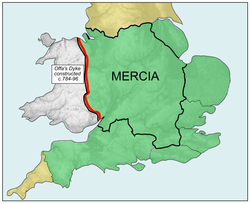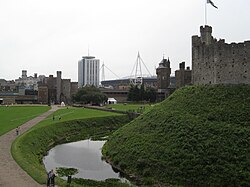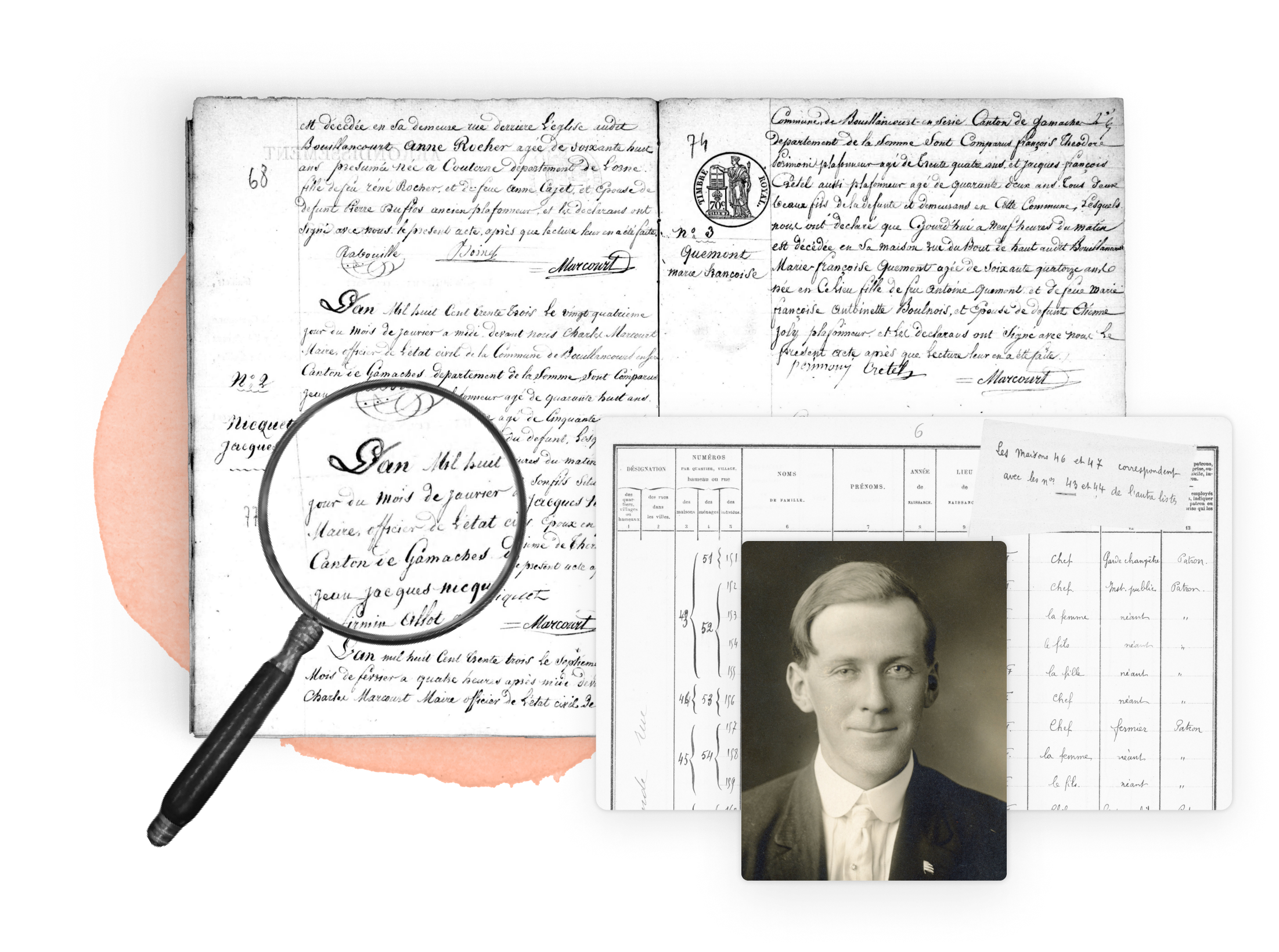
Wales is the western part of the island of Britain. It stands out from the rest of Britain in so far as it is bounded on the north and west by the Irish Sea and the extentive Bristol Channel to the south. Furthermore, the long western border with England was historically demarcated by Offa's Dyke, a long series of earthworks and dykes which was erected along the frontier by King Offa of Mercia in the second half of the eighth century.[1] Wales is also distinct from neighboring England culturally in so far as the Cymric people retained control over the region in medieval times whilst England was conquered successively by the Anglo-Saxons, Danes and Normans. However, gradually Wales was subsumed politically by Norman England in the High Middle Ages and since the days of King Edward I Wales has been politically dominated by England, latterly as as part of the United Kingdom.
Research your ancestors on MyHeritage
Welsh history
Wales has been inhabited by Homo sapiens for about 30,000 years. Being geographically remote from the more advanced civilizations of the Mediterranean, the Neolithic period here lasted until well into the third millennium BCE, though the cultures which existed here in prehistoric times were relatively well developed, with some of the oldest ceremonial burial sites in Western Europe being found here. During the Iron Age Wales, like all of England and parts of southern Scotland, was colonized by the Brittonic-speaking Celts who ruled the region until the arrival of the Romans in the middle of the first century CE. The Celts of Wales, notably the Ordovices, proved some of the staunchest opponents of Roman expansion in the decades that followed, but eventually came under Roman jurisdiction in the time of famed governors such as Agricola.[2]

Wales, like the rest of England, reverted to local rule following the Roman withdrawal from Britain in 410 CE. In the medieval centuries that followed Wales was dominated by a number of local Welsh princes, with the region retaining its independence broadly through the rise of the Danish kingdoms of northern England and East Anglia and the Kingdom of Wessex in southern England. From the time of the Norman Conquest of England in the 1060s, however, the Welsh were under threat of foreign domination. Yet for some time they managed to retain a position of semi-autonomy such that historians of the High Middle Ages speak of a Cambro-Norman culture here which was still Cymric (Welsh) to a considerable extent, but increasingly influence by the Anglo-Norman culture of England.
The full English conquest of Wales is generally traced to the reign of King Edward I, also known as Edward Longshanks, who not only conquered the more powerful Welsh lords such as Llywelyn ap Gruffudd, but also began introducing colonies of more loyal English settlers into key parts of southern and northern Wales.[3] Thereafter the process of political and cultural integration into England advanced gradually. The last major revolt against English domination was led by Owain Glyndwr in the early fifteenth century. Wales was eventually absorbed into the Kingdom of Great Britain in 1707 and the United Kingdom through the Act of Union in 1801.[4] Despite this centuries long domination by England, recent decades have seen a rejuvenation of the Welsh independence movement as Welsh political parties emerged and some powers of self-governance have been devolved to the local government in Cardiff.[5]
Welsh geography

Wales is located in the west of the island of Britain. It is a country of contrasting geographical regions. The south of the country is, for instance, quite low-lying and consists of coastal plains and valley, whereas the further north one heads the higher the terrain becomes and central and northern Wales are quite hilly and mountainous. The terrain has shaped the country’s economy in the past, with the rugged terrain ideal for sheep farming which became synonymous with large parts of the country. A great part of the country is undeveloped and has numerous large areas of outstanding beauty that are protected, such as Snowdonia National Park.[6] Cardiff, the national capital, is a city of just around 350,000 people, while the only other cities of note are Swansea and Newport in a country which is comparatively underpopulated by comparison with neighboring England.[7]
Researching family history in Wales
Although there are many records available for the eighteenth and early nineteenth century for Welsh demographic history, including church records and local statistical data, the first detailed national census was not undertaken until 1841. Earlier census records date back to 1801, yet these did not contain details of individuals, but were simply accounts of the numbers of people per household, enumerated for bare population data and taxation purposes.[8] Many demographic and genealogical records pertaining to Wales are located in the National Library of Wales.[9] However, because of the manner in which the country has been dominated politically by England since the High Middle Ages, a very large amount of the relevant documentary material is housed in London in the National Archives of the United Kingdom.[10] Researchers looking for local records pertaining to individual families in shires like Carmarthen, Glamorgan, Denbigh and the like will find extensive amounts of data in the local archives and records of each individual county in Wales.[11]
Research census records in Wales on MyHeritage
See also
Explore more about Wales
- England & Wales, Birth Index, 1837-2005 record collection on MyHeritage
- England & Wales, Marriage Index, 1837-2005 record collection on MyHeritage
- England & Wales, Death Index, 1837-2005 record collection on MyHeritage
- England & Wales, Index of Wills and Probates, 1853-1943 record collection on MyHeritage
- 1901 England & Wales Census record collection on MyHeritage
- Researching Your Ancestors in England and Wales at Legacy Family Tree Webinars
- Welsh Brothers Find Each Other via MyHeritage DNA, and the Similarities Are Uncanny on the MyHeritage blog
References
- ↑ https://www.english-heritage.org.uk/visit/places/offas-dyke/history/
- ↑ https://www.roman-britain.co.uk/tribes/ordovices/
- ↑ https://www.historyextra.com/period/medieval/history-explorer-the-conquest-of-wales/
- ↑ https://www.history.com/news/united-kingdom-scotland-northern-ireland-wales
- ↑ https://www.centreonconstitutionalchange.ac.uk/the-basics/what-powers-does-senedd-welsh-parliament-have
- ↑ https://www.bbc.co.uk/wales/culture/sites/aboutwales/pages/geography.shtml
- ↑ https://www.wales.com/about/welsh-cities
- ↑ https://www.library.wales/catalogues-searching/help-to-search/family-history-help/census
- ↑ https://www.library.wales/
- ↑ https://www.nationalarchives.gov.uk/
- ↑ https://www.library.wales/catalogues-searching/catalogues/other-resources/archives-wales-search/repositories


